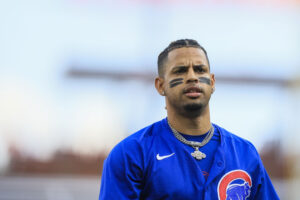The Dodgers have re-signed right-hander Nick Frasso to a minor league contract, per Aram Leighton of Just Baseball. Frasso was non-tendered by the club in November but now returns on a new deal.
The 27-year-old was a fourth round draft pick by the Blue Jays in 2020 and has not yet made his big-league debut. He was traded to the Dodgers in August 2022 and pitched the end of that season and most of 2023 in Double-A before reaching Triple-A in August 2023. In 93 innings across two levels in 2023, Frasso had a 3.77 ERA while striking out 26.8% of hitters and allowing just 0.38 home runs per nine innings. He was added to the 40-man roster in November 2023 and ranked as the Dodgers’ No. 2 prospect entering 2024, according to MLB.com. Unfortunately, Frasso underwent labrum surgery on his shoulder that same month, plus a clean-up procedure on his right hip. He ended up missing the entire 2024 season.
He returned to Triple-A in 2025 and posted diminished results. In 77 innings across 43 appearances (five starts), Frasso had a 5.49 ERA and struck out 19.7% of hitters while walking 12.1%. He also allowed 10 home runs after previously allowing no more than four in a season. Meanwhile, his average exit velocity allowed was 88.3 mph after sitting at 85.0 mph at Triple-A in 2023. Injuries have not been uncommon for Frasso. Before the two surgeries in 2024, he underwent an internal brace procedure in 2021 to fix a partially torn UCL. In 2025, he ended the year on the major league 60-day injured list with an undisclosed injury. The Dodgers non-tendered him on November 21.
Frasso’s prospect pedigree and solid stuff make him a decent, low-cost depth option. He averaged 94.6 mph on his four-seamer this year, using the pitch 53.5% of the time. He mixed in his changeup and upper-80s slider 26.2% and 19.5% of the time, respectively. Both the fastball and changeup have graded as plus pitches in the past. Altogether, Frasso has a 3.81 ERA in 229 career minor-league innings with a 26.5% strikeout rate and 0.6 HR/9 allowed. He has accrued just two days of big-league service time and has one option year remaining.
Photo courtesy of Mark J. Rebilas, Imagn Images

